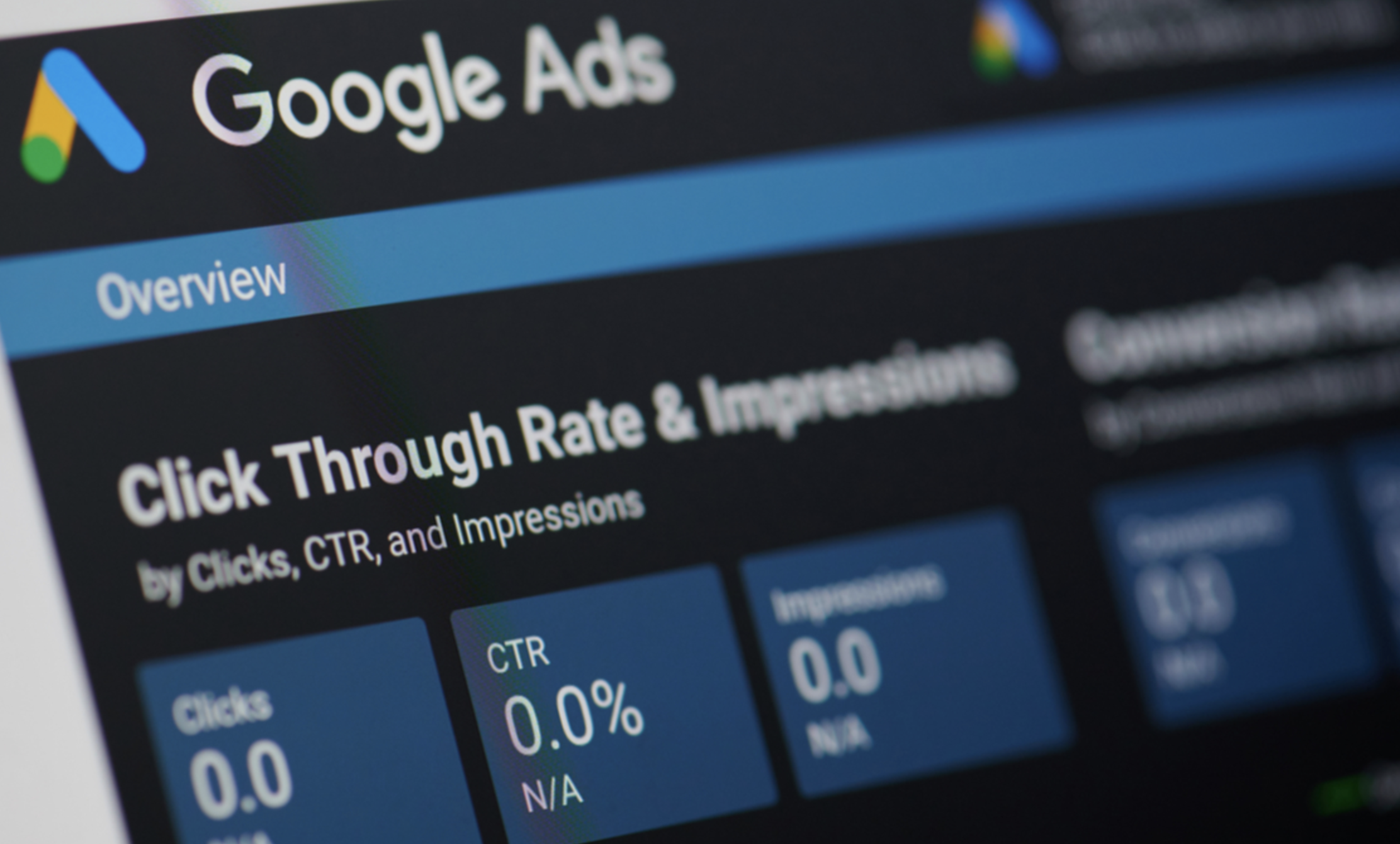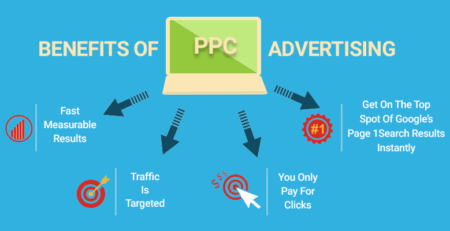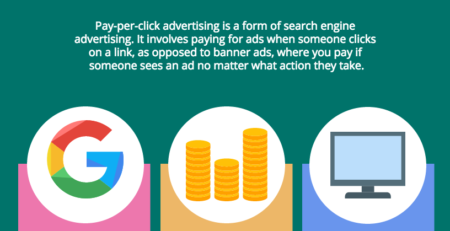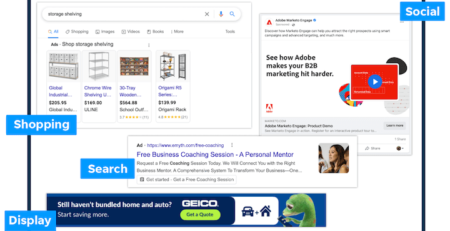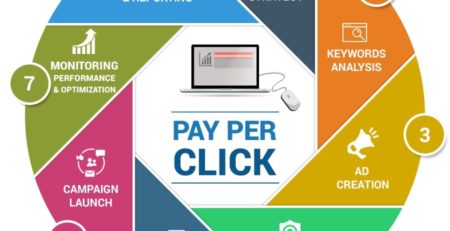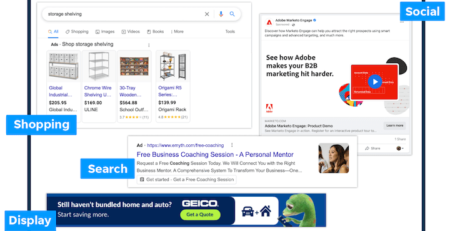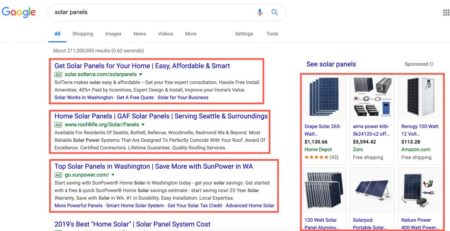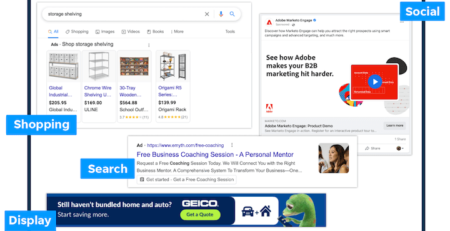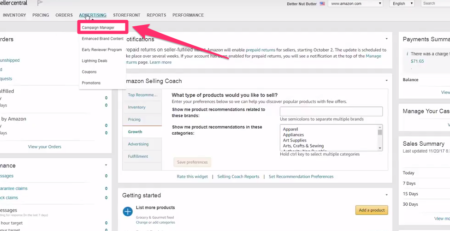How To Create A Pay Per Click Website?
Are you interested in learning how to create a pay per click website? Look no further! In this article, we’ll walk you through the steps to create a website that generates revenue through pay per click advertising. Whether you’re a tech-savvy individual looking to monetize your website or a curious teenager exploring the world of online business, we’ve got you covered.
But wait, what exactly is pay per click advertising? Well, it’s a popular marketing model where advertisers pay a fee each time someone clicks on their ads. These ads are displayed on websites, and when a visitor clicks on them, the website owner earns a commission. Pretty neat, right?
Now, you might be wondering how to get started with creating your very own pay per click website. Don’t worry; we’ve got your back. In the following paragraphs, we’ll provide you with a step-by-step guide, expert tips, and important considerations to help you set up a successful pay per click website that attracts visitors and generates income. Get ready to dive into the exciting world of online advertising!
- Research target audience and keywords.
- Create a user-friendly website with compelling content.
- Set up a Google Ads account and define your campaign goals.
- Create effective ad copy and design engaging landing pages.
- Monitor and optimize your campaigns regularly.
Wow your audience with captivating ads and a high-converting website, and watch your pay-per-click dreams come true!
 How to Create a Pay Per Click Website?
How to Create a Pay Per Click Website?
Pay per click (PPC) advertising has become a popular method for businesses to drive targeted traffic to their websites and increase revenue. If you’re looking to create a pay per click website, you’ll need to understand the intricacies of PPC marketing and implement effective strategies to maximize your success. In this article, we’ll explore the essential steps involved in creating a pay per click website and provide valuable tips and insights to help you achieve your goals.
Finding Your Niche
Before diving into the world of pay per click advertising, it’s important to identify your niche. Determine your target audience, their needs, and the products or services you want to promote. Conduct thorough market research to gain insights into the competition, keywords, and trends in your industry. By understanding your niche, you’ll be able to create compelling and relevant ad campaigns that resonate with your target audience.
Step 1: Set Up Your Website
To create a pay per click website, you need a well-designed and user-friendly website that effectively represents your brand and offerings. Choose a reliable web hosting provider and register a domain name that reflects your business. Install a content management system (CMS) like WordPress to easily manage and update your website. Optimize your website’s layout, navigation, and content to provide a seamless user experience. Ensure your website is mobile-responsive and loads quickly to enhance user satisfaction.
Step 2: Identify Your Goals
Before launching your pay per click campaigns, clearly define your goals. Determine whether you want to increase website traffic, generate leads, or drive sales. Establishing specific and measurable goals will help you track the success of your campaigns and make necessary adjustments along the way. Set realistic budgets and timelines to allocate resources effectively and achieve your objectives.
Step 3: Keyword Research
Keyword research is the foundation of any successful pay per click campaign. Identify relevant keywords and phrases that align with your business and target audience. Use keyword research tools like Google Keyword Planner, SEMrush, or Moz Keyword Explorer to discover high-volume and low-competition keywords. Consider long-tail keywords to target specific user intents and improve your chances of conversion. Create a comprehensive list of keywords to inform your ad copy and campaign structure.
Step 4: Craft Compelling Ad Copy
Writing persuasive ad copy is crucial to attract clicks and drive conversions. Highlight the unique selling points of your products or services and create a sense of urgency or exclusivity in your ads. Use compelling calls-to-action that encourage users to take the desired action. A/B test different ad variations to identify the most effective messaging and optimize your click-through rates. Continuously monitor and refine your ad copy to maximize the return on your PPC investment.
Step 5: Set Up Conversion Tracking
Tracking conversions is vital to evaluate the success of your pay per click campaigns. Set up conversion tracking by installing a tracking pixel or code snippet on your website. This will allow you to monitor key metrics such as sign-ups, purchases, or downloads. By analyzing conversion data, you can identify areas for improvement and make data-driven decisions to optimize your campaigns further. Consider integrating tools like Google Analytics to gain deeper insights into user behavior and website performance.
Step 6: Monitor and Optimize
Creating a pay per click website is an ongoing process that requires continuous monitoring and optimization. Regularly review your ad performance, click-through rates, and conversion rates to identify strengths and weaknesses. Adjust your bidding strategies, ad targeting, and keyword bids to maximize your return on investment. Stay up-to-date with industry trends and adapt your campaigns accordingly. A successful pay per click website requires constant refinement and optimization to stay ahead of the competition.
Step 7: Test, Learn, and Refine
Testing is an essential component of creating and improving a pay per click website. Experiment with different ad formats, landing page designs, and targeting options to evaluate their effectiveness. A/B test various elements such as headlines, visuals, and calls-to-action to discover what resonates best with your audience. Use the insights gained from testing to refine your campaigns, landing pages, and overall PPC strategy. Continuously learn from your data and adapt your approach to drive better results.
The Benefits of Pay Per Click Advertising
Pay per click advertising offers several advantages for businesses looking to boost their online presence and drive traffic to their websites. Here are some key benefits of implementing PPC advertising:
Immediate Results
Unlike organic search engine optimization, PPC advertising delivers immediate results. Once your campaigns are active, your ads will start appearing on search engine result pages and relevant websites, driving traffic to your site right away.
Targeted Advertising
PPC advertising allows you to target specific keywords, geographic locations, demographics, and interests. This precision targeting ensures that your ads are seen by the most relevant audience, increasing the likelihood of conversions.
Cost Control
With PPC advertising, you have full control over your budget. You can set daily or monthly spending limits and adjust your bids to align with your goals. This flexibility enables you to maximize your returns while staying within your budget.
Measurable Results
One of the greatest advantages of PPC advertising is its measurability. You can track key performance metrics such as impressions, clicks, conversions, and return on ad spend (ROAS). This data-driven approach allows you to make informed decisions and optimize your campaigns for better results.
Brand Exposure
Even if users don’t click on your ads, PPC advertising provides valuable brand exposure. Consistent visibility on search result pages and relevant websites helps build brand awareness and establishes your business as a trusted authority in your industry.
Adaptable Campaigns
PPC advertising allows you to make real-time adjustments to your campaigns. You can pause or restart ads, modify keywords and ad copy, and implement different bidding strategies based on performance data. This adaptability ensures that your campaigns remain effective and relevant.
Tips for Creating a Successful Pay Per Click Website
Now that you have a better understanding of how to create a pay per click website, here are some additional tips to help you succeed:
1. Understand Your Target Audience
To create effective ad campaigns and maximize conversions, it’s crucial to understand your target audience. Conduct market research, analyze customer demographics, and identify their pain points and motivations. Tailor your ad copy, landing pages, and calls-to-action to address these specific needs and desires.
2. Emphasize Quality Score
Quality Score is a vital metric in pay per click advertising. It assesses the relevance and quality of your keywords, ad copy, and landing pages. Aim for high-quality scores, as they can lower your cost per click and improve your ad position. Create compelling ad copy, optimize your landing pages, and ensure keyword relevance to improve your Quality Score.
3. Leverage Ad Extensions
Ad extensions enhance your ads with additional information, increasing their visibility and click-through rates. Utilize extensions like sitelinks, callouts, call extensions, and structured snippets to provide more context to your ads and highlight specific features or promotions. Ad extensions can significantly improve your ad performance and drive more qualified traffic to your website.
4. Implement Remarketing
Remarketing allows you to target users who have previously visited your website or engaged with your ads. By showing personalized ads to these users as they browse other websites, you can increase brand recall and encourage them to revisit your site or complete a desired action. Implementing remarketing can significantly improve your conversion rates and ROI.
5. Stay Informed About Industry Trends
The digital marketing landscape is constantly evolving, and staying informed about industry trends is essential for success in pay per click advertising. Stay updated with algorithm changes, new features, and emerging platforms to adapt your strategies accordingly. Attend industry conferences, participate in webinars, and engage with online communities to stay ahead of the curve.
In conclusion, creating a pay per click website requires careful planning, research, and continuous optimization. By following the steps outlined in this article and implementing the tips provided, you can create a successful pay per click website that drives targeted traffic, generates leads, and boosts your online presence. Remember to regularly monitor your campaigns, analyze performance data, and make data-driven decisions to optimize your results. Happy PPC journey!
Key Takeaways: How to Create a Pay Per Click Website?
- Understand the concept of pay per click advertising.
- Choose a reliable web hosting service for your website.
- Create engaging and relevant content for your target audience.
- Research and select profitable keywords for your PPC campaigns.
- Optimize your website for search engines to attract organic traffic.
Frequently Asked Questions
In the world of online advertising, pay-per-click (PPC) is a popular model where advertisers pay a fee each time their ad is clicked. Creating a successful pay-per-click website requires a strategic approach. Here are some common questions about creating a pay-per-click website.
1. What is the first step in creating a pay-per-click website?
The first step in creating a pay-per-click website is conducting thorough research. Start by identifying your target audience and the keywords they are likely to use when searching for products or services. Use keyword research tools to find relevant and high-volume keywords that align with your website’s offerings. This will help you create effective ad campaigns that generate traffic and conversions.
Next, you’ll need to set up an account with a PPC advertising platform, such as Google Ads or Bing Ads. These platforms provide the tools and resources necessary to create and manage your pay-per-click campaigns.
2. How do I create compelling ad copy for my pay-per-click website?
The key to creating compelling ad copy lies in understanding your target audience and their pain points. Highlight the unique selling points of your product or service and address how it can solve the customer’s problem. Use clear and concise language to convey your message and make sure your ad copy is relevant to the keywords you are targeting.
In addition to well-crafted ad copy, it’s essential to include a strong call-to-action (CTA) in your ads. This instructs the user on what action they should take, such as “Buy Now” or “Sign Up Today.” A compelling CTA can significantly improve the click-through rate and conversion rate of your pay-per-click campaigns.
3. What is landing page optimization and why is it important for a pay-per-click website?
Landing page optimization involves improving the elements on your website’s landing page to increase conversions. When a user clicks on your ad, they should be directed to a landing page that is specifically designed to match the ad’s intent and offer. This creates a seamless user experience and increases the likelihood of conversions.
Some key elements to consider when optimizing your landing page include a clear headline, persuasive copy, relevant images or videos, a prominently placed CTA, and a user-friendly design. By optimizing your landing page, you can maximize the effectiveness of your pay-per-click campaigns and achieve higher conversion rates.
4. How can I track the performance of my pay-per-click campaigns?
Tracking the performance of your pay-per-click campaigns is crucial for evaluating their success and making data-driven decisions. Most PPC advertising platforms provide built-in tracking and analytics tools that allow you to measure important metrics such as click-through rate (CTR), conversion rate, and return on ad spend (ROAS).
To track the performance of your campaigns, you can set up conversion tracking codes on your website. These codes track user actions, such as making a purchase or filling out a contact form. By analyzing the data from these tracking codes, you can identify which keywords, ad copy, or landing pages are driving the most conversions and make informed optimizations.
5. What is the role of keyword bidding in a pay-per-click campaign?
Keyword bidding is an essential aspect of a pay-per-click campaign. It refers to the process of determining how much you are willing to pay for each click on your ads. When setting your keyword bids, consider factors such as the competitiveness of the keyword, your budget, and the potential return on investment (ROI) for each click.
PPC advertising platforms usually use an auction-based system, where advertisers compete for ad placement based on their bid amounts. The higher you bid, the more likely your ad will appear in prominent positions. However, a high bid doesn’t guarantee success. It’s essential to strike a balance between bidding competitively and ensuring a positive ROI for your pay-per-click campaigns.
Pay-Per-Click-Advertising Explained For Beginners
Summary
Creating a Pay Per Click (PPC) website can be a great way to earn money online. By following a few simple steps, you can set up a successful PPC website that generates income.
First, choose a niche for your website and research keywords that are relevant to that niche. Then, create high-quality, engaging content that includes those keywords. Next, sign up for a PPC advertising program like Google AdSense or Media.net and place ads on your website.
To attract visitors to your website, promote it using social media, search engine optimization, and email marketing. Monitor your website’s performance regularly and make necessary adjustments to increase clicks and revenue. With some effort and dedication, you can create a profitable PPC website and start earning money online.

